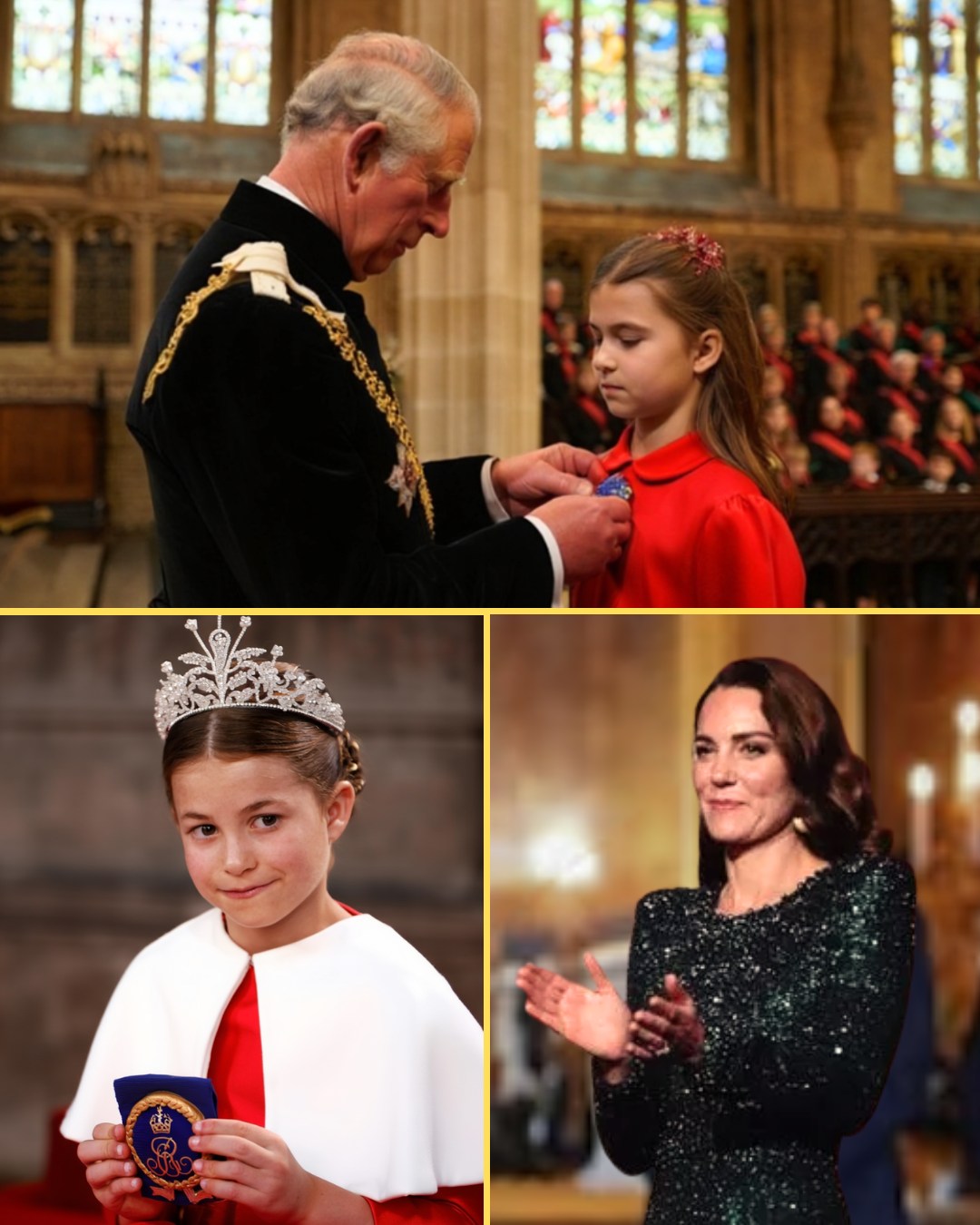Windsor Castle, Saturday morning — In the hushed sanctity of St. George’s Chapel, where centuries of monarchs have walked beneath vaulted ceilings heavy with history, a quiet ceremony took place — one whose aftershocks are now rippling through Britain.
King Charles III, amid the solemn chorus of the royal choir, stepped forward and announced that Princess Charlotte of Wales would be named a Lady Companion of the Most Noble Order of the Garter — the highest and oldest order of chivalry in the United Kingdom, traditionally reserved for knights, heads of state, and senior members of the Royal Family.
It was a move without precedent. Never before had anyone under twenty-one been formally appointed to the Order. Yet Charles went further still. As the words of oath echoed through the chapel, he approached his ten-year-old granddaughter and lifted from a velvet box a diamond-encrusted, blue-enameled Garter badge, inscribed with the ancient motto “Honi soit qui mal y pense” — “Shame on him who thinks evil of it.”
But the room fell silent not because of the grandeur of the act, but because of the provenance of that insignia. According to a former curator of the Royal Collection Trust, the badge once belonged to Queen Alexandra, wife of King Edward VII — a woman whose elegant façade concealed years of turmoil and tension within the Edwardian court. After Alexandra’s death, the insignia was locked away for more than a century, never again to be worn.
A gesture layered with meaning
Moments after the ceremony, Buckingham Palace released only a brief statement:
“His Majesty wished to honor the young Princess for her grace, discipline, and sense of duty shown beyond her years. The insignia carries a symbolic connection to the lineage of royal women who upheld the Crown through eras of challenge.”
Yet within palace walls, the decision has stirred intense debate. According to insiders, several senior advisers protested vehemently, arguing that granting a Garter appointment — normally conferred for lifelong service — to a child blurred tradition and might mislead the public about succession.
Founded in 1348 by King Edward III, the Order of the Garter has always stood for loyalty, honor, and unwavering service to the monarchy. By breaking that ancient pattern, Charles has, intentionally or not, delivered what some call a political message: to turn the spotlight toward the next generation — and perhaps toward Charlotte herself, whose calm poise and natural confidence have already drawn comparisons to her mother, the Princess of Wales.
A badge that divides the nation
Praise and outrage erupted in equal measure. The Times quoted a royal historian:
“Choosing Queen Alexandra’s badge is provocative. Alexandra quietly rebelled against the limitations placed upon women in the royal court. Charles may be resurrecting that symbol of defiance under the guise of tradition.”
Others suggested the King is signaling a new royal ideology, one in which female heirs will take a more visible role in the institution’s future.
Across social media, hashtags like #CharlotteTheChosenOne, #NewRoyalEra, and #TheGarterOath surged worldwide. Admirers called Charlotte “the pure emblem of a modern monarchy,” while critics asked whether the ceremony masked something larger — a deliberate repositioning of the royal line of succession.
